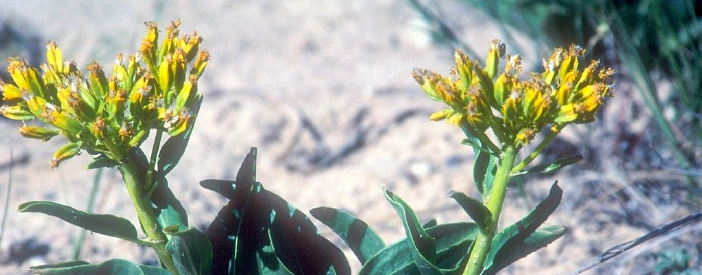Episode 21: Desert Yellowheads

Image: By Bonnie Heidel/USGov-Interior [Public domain], via Wikimedia Commons
Wyoming is home to one of the world’s rarest plants, the desert yellowhead. This unusual plant defies all expectations—its shiny, dark green leaves contrast with the rough and rugged leaves of its neighbors on the wind-swept slopes of central Wyoming. At a foot or so tall, it towers over the diminutive, pincushion-sized plants that are adapted to dry, windy sites—the so-called cushion plant communities. It favors infertile, nearly white soils, where vegetation is sparse. In fact, it distains nearby habitats with better soil and larger and more abundant plant cover. A member of the sunflower family, desert yellowhead is unusual in its flowers, too. Petals are so small as to be nearly microscopic, but each group of a few flowers is surrounded by yellow-green, petal-like bracts, looking rather like tiny bright lanterns on the dusty landscape. Desert yellowhead was unknown to science until 1990, when it was discovered during a survey. The discoverer gave it a scientific name, Yermo xanthocephala, which, translated to English, means desert yellowhead. Desert yellowhead is found nowhere else in the world, and seems to have no near relatives in the mountain west, so its origin and history in the Wyoming desert remain mysteries.



